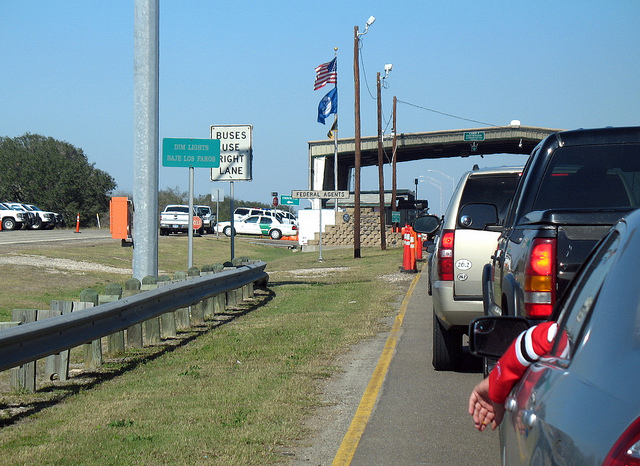Checkpoints Isolate Many Immigrants in Texas’ Rio Grande Valley

*My pick for lunch read of the day. It’s a clear portrait of what many people along the U.S.-Mexico border call la jaula de oro, the golden cage. New YorK Times writer Manny Fernandez tells the story of Mexicans caught in a “no man’s land” between the border and the Border Patrol checkpoints 100 miles away. They can’t clear the checkpoint and can’t return to Mexico without risking the treacherous undocumented crossing on their return. So they’re stuck in a box on a map. VL
By Manny Fernandez, The New York Times
BROWNSVILLE, Tex. — Elizabeth Lopez swam across the Rio Grande 19 years ago to come to America, where she began cleaning houses and raising three daughters in this city of swaying palm trees at the southern tip of Texas.
It did not matter to her that her life was confined to a narrow sliver of the country — a zone north of the Mexican border but south of traffic checkpoints that the Border Patrol operates within Texas. Everything changed in 2010 when her fourth child, Angel, was born with Down syndrome and colon and heart problems. Living in what some call “la jaula de oro” — the golden cage — suddenly took on a whole new meaning.
For decades, these interior checkpoints up to 100 miles north of the border have left thousands of undocumented immigrants and their families in the Rio Grande Valley in something of a twilight zone. Their isolation has only intensified as border security has tightened. And though neither side of the debate about immigration has focused on the issue so far, that may be changing.
Click HERE to read the full story.
[Photo by PINKÉ/Flickr]

